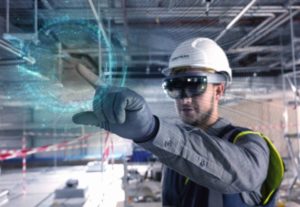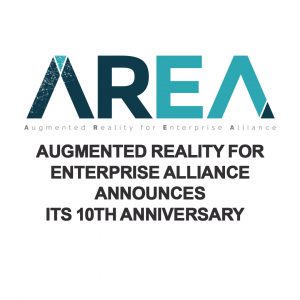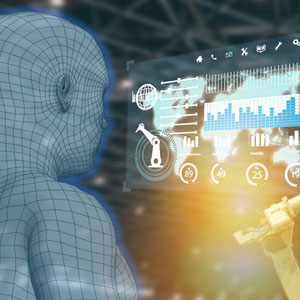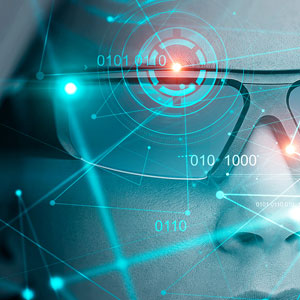Benefits attributed to use of Augmented Reality are not just marketing hype; they are borne out in studies over the past decade. Despite requirements that still impose costs and other obstacles on AR implementation in the enterprise, the studies reveal that having AR-assisted systems guide users in performing complex tasks and support their collaboration is beneficial to performance.
This article summarizes some academic research findings and explains how AR can improve performance for scenarios where an AR system guides users through assembly and maintenance tasks.
Studies
Many studies highlight the differences in task completion speeds and error rates between two groups of users, with one group using a device such as a head-mounted display or watching a screen with AR instructions, and the other relying on traditional media such as a paper manual to complete tasks.
In four such studies, both groups performed identical, but relatively simple assembly and maintenance tasks. The table below summarizes the tasks on which the studies focus and the type of AR tested.
| Task(s) |
Device with AR instructions |
Study |
- Discern the difference between the exhaust and intake camshaft holders
- Remove the camshaft holder from a 600cc engine
|
Wall projector and cameras |
Augmented reality on large screen for interactive maintenance instructions
M. Fiorentino, A.E. Uva, M. Gattullo, S. Debernardis, G. Monno, 2014 |
| Assemble a small axial piston motor in the correct order and position |
Desktop computer screen and cameras |
Evaluation of Graphical User Interfaces for Augmented Reality Based Manual Assembly Support
J Herrema, 2013 |
| Assemble parts of a tractor accessory power unit in the correct order and position |
Head-mounted display |
Augmented Reality Efficiency in Manufacturing Industry: A Case Study
J. Sääski, T. Salonen, M. Liinasuo, J. Pakkanen, 2008 |
Assemble a given structure using multicolored Duplo blocks of varying shapes and sizes
Note: using Duplo blocks reduced bias towards a population with expertise in assembly, and generalized tasks |
Two groups:Head-mounted display;
Laptop screen and cameras |
Comparative Effectiveness of Augmented Reality in Object Assembly
A. Tang, Charles Owen, F. Biocca, W. Mou, 2003 |
The studies found statistically significant differences in the performance of users, with AR-enabled groups having the edge. To cite Augmented Reality Efficiency in Manufacturing Industry: A Case Study:
- The group using AR instructions completed tasks 13% faster on average than the group using paper
- When using paper, the probability of using inappropriate tools was six times higher than with AR
- Also when using paper, the probability of putting a part in the wrong place was twice as high than with AR
These are the findings of one study and readers are invited to peruse the selection of linked studies above for specific information.
How AR Impacts Task Performance
The cited studies amply describe the positive impact of Augmented Reality on task performance, but how exactly does AR work?
Workers see instructions precisely overlaid on, or associated with, the parts to be handled or manipulated. These instructions can take the form of graphics, text or even audio. By delivering instructions when and where they’re needed, Augmented Reality reduces the cognitive work of part and tool recognition and allows users to concentrate more fully on the task at hand.
Furthermore, AR:
- Reduces body movements—workers tend to move around less when all the information is in one place
- Reduces attention switching—no need to switch between doing tasks and thumbing through a manual
- Promotes learning through spatial memory—it provides a frame of reference for fast and effective learning of new tasks, processes and equipment
Overall, Augmented Reality reduces both physical and cognitive efforts which makes for more efficient task completion than with traditional media such as manuals or on-screen help.
Caveat of AR
As any coin has two sides, these studies also have raised shortcomings associated with AR-assisted processes. A user’s exclusive focus on one area of view may reduce situational awareness of the periphery. This is known in industrial literature as “attention tunneling,” and is of acute concern in fighter pilots using head up displays.
Some research in Augmented Reality has uncovered potential issues with attention tunneling emerging from excessive focus on a single task and overreliance on AR cues. As one study mentions, this is primarily a design issue:
“Designers seeking to make use of the performance gains of AR systems also need to consider how the user manages their attention in such systems and avoid the over-reliance on cues from the AR system.”
Conclusion
Research into human factors of Augmented Reality reveals valuable findings that can be applied directly to the design of AR-assisted procedures for enterprise. The studies conclude that users can complete assembly and maintenance tasks more rapidly and with fewer mistakes with Augmented Reality. These conclusions will have significant impacts on business process design and operational costs.
Which human factors studies have you found helpful to guide your AR project design?












